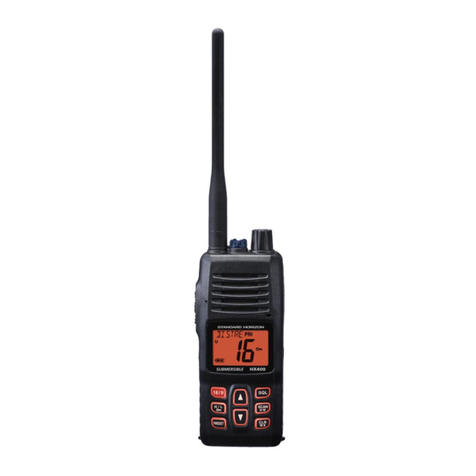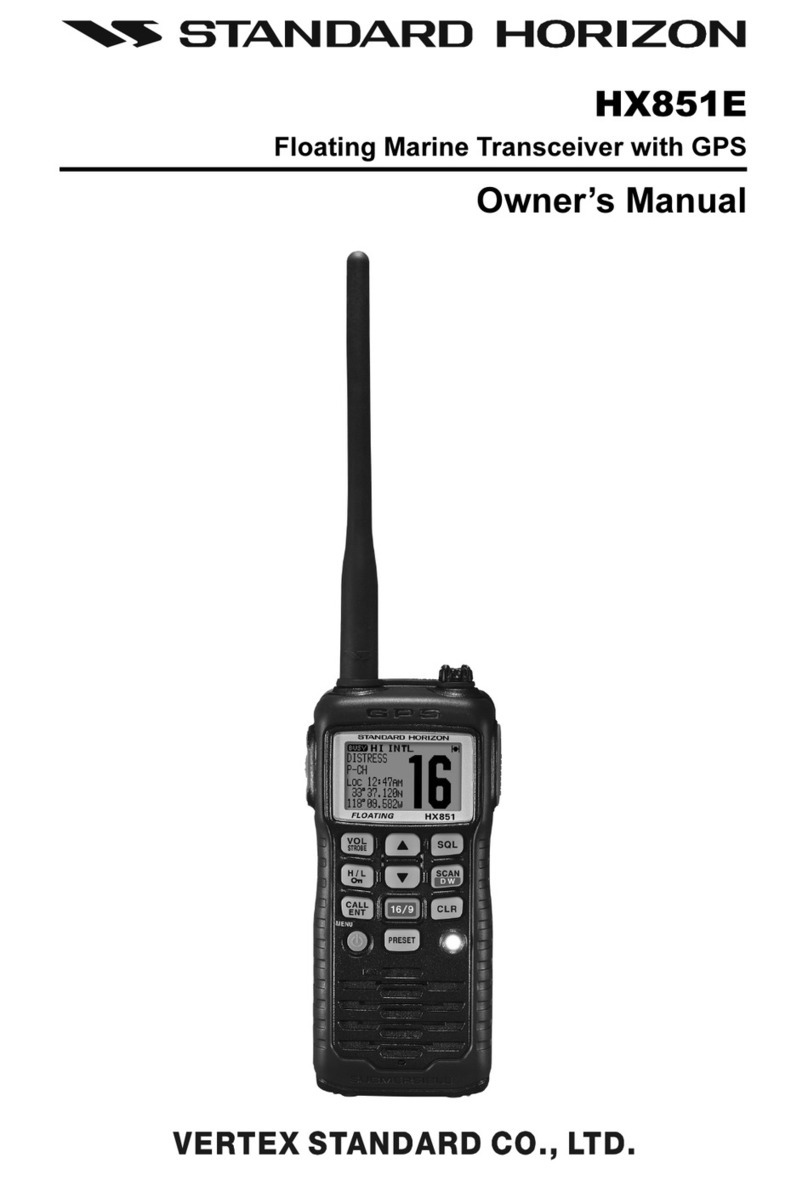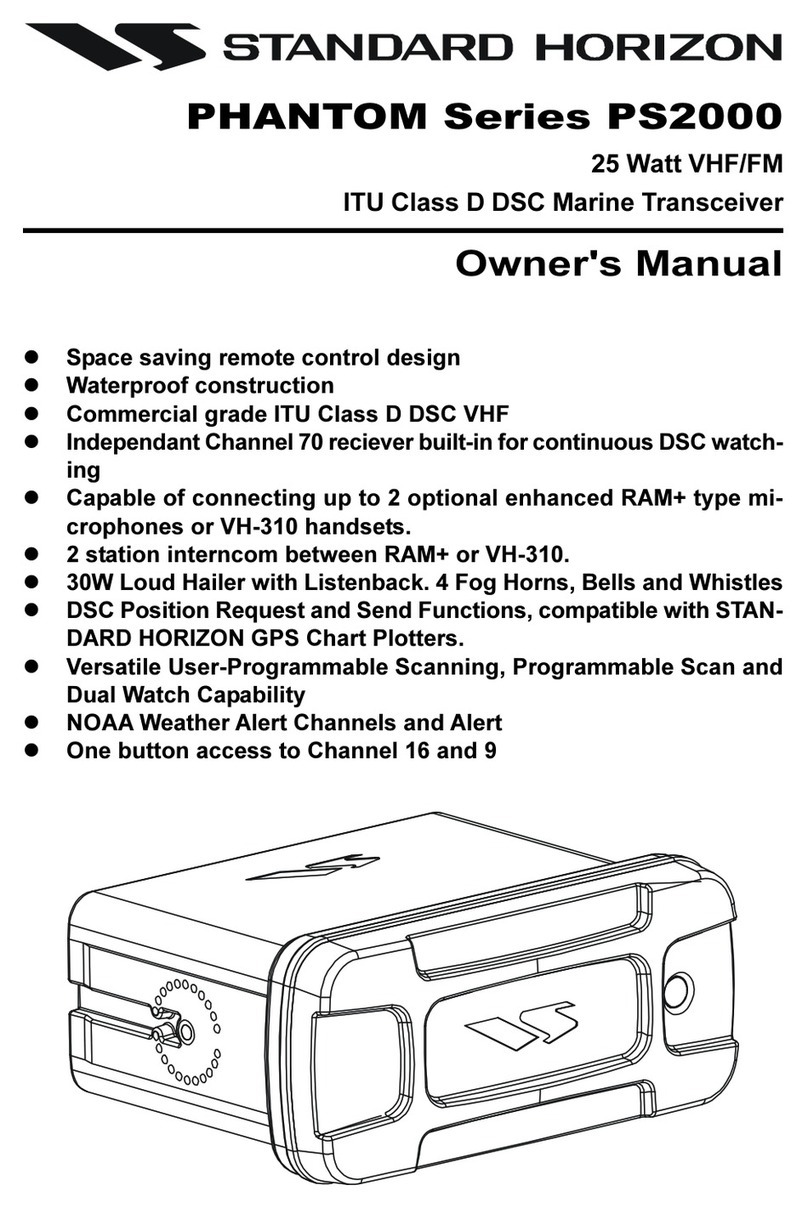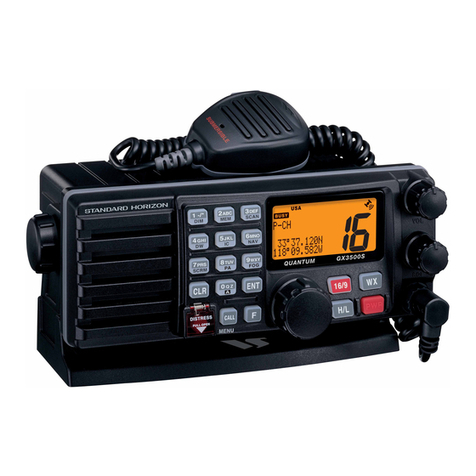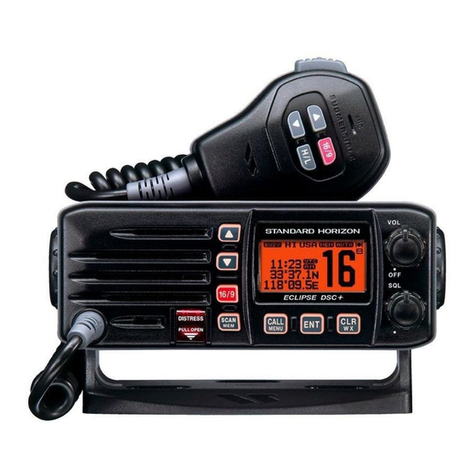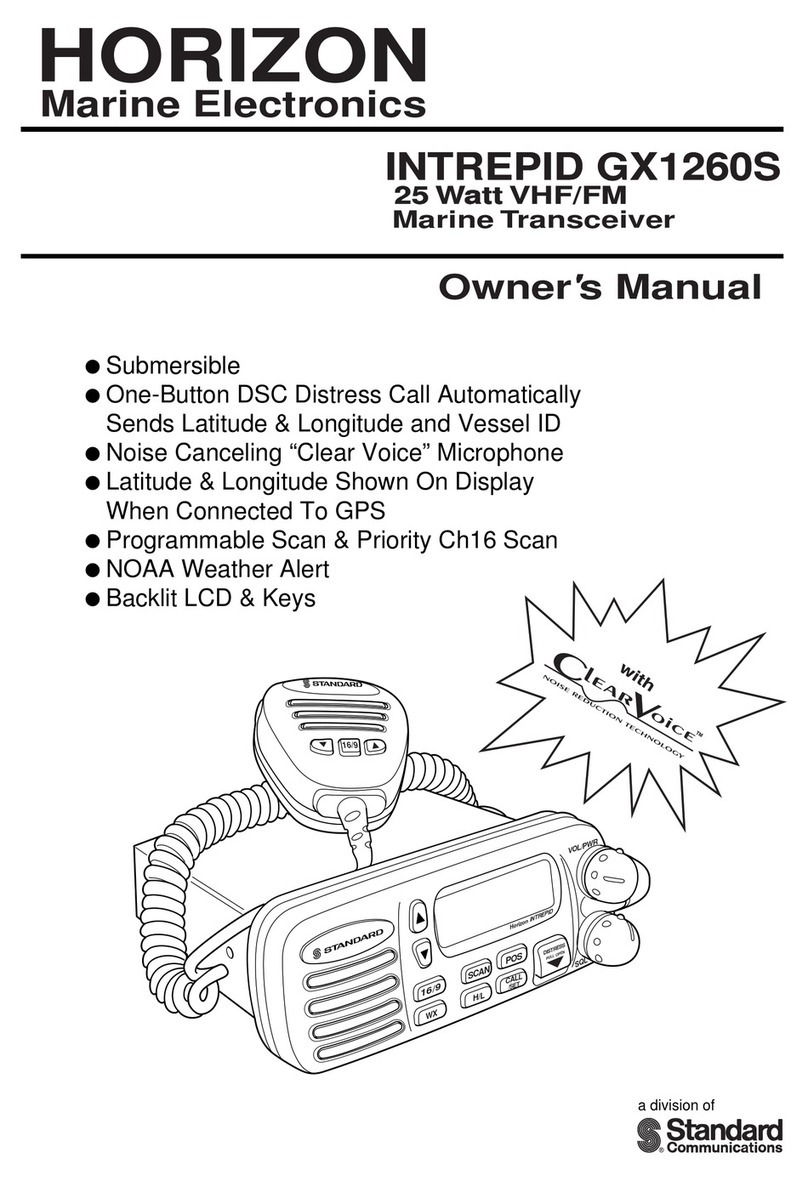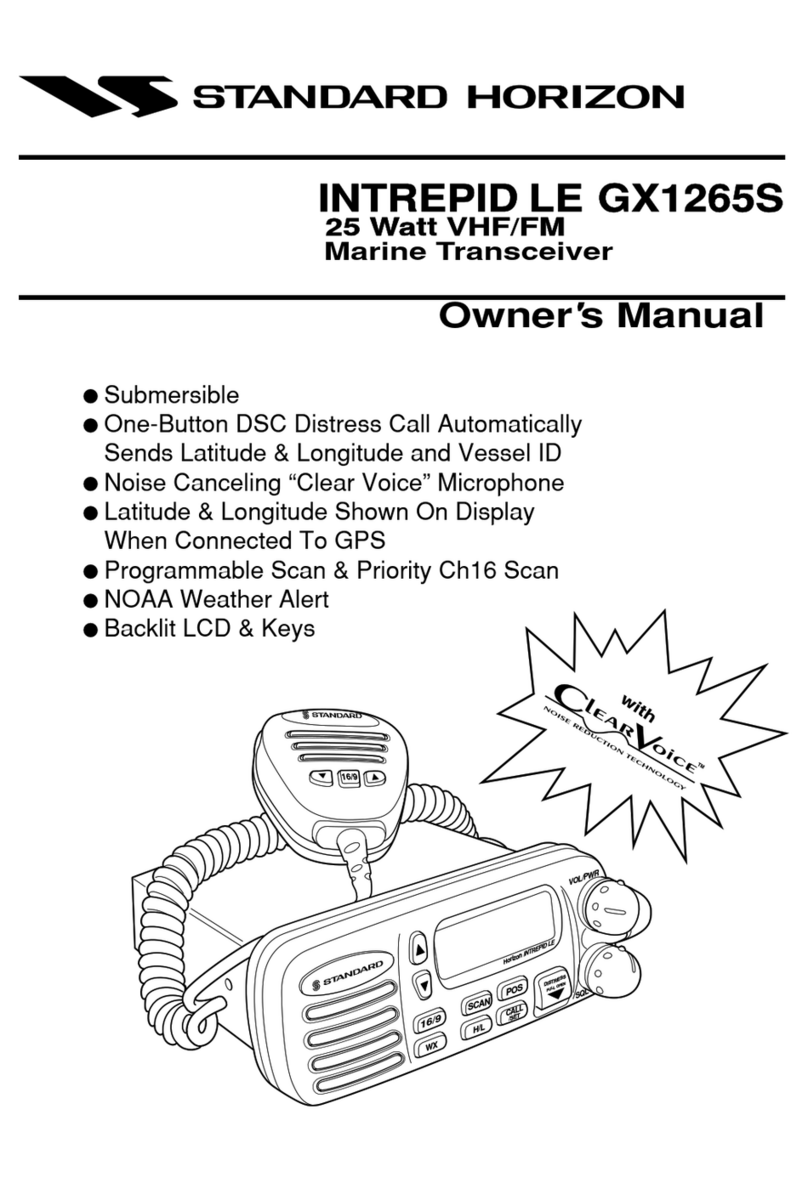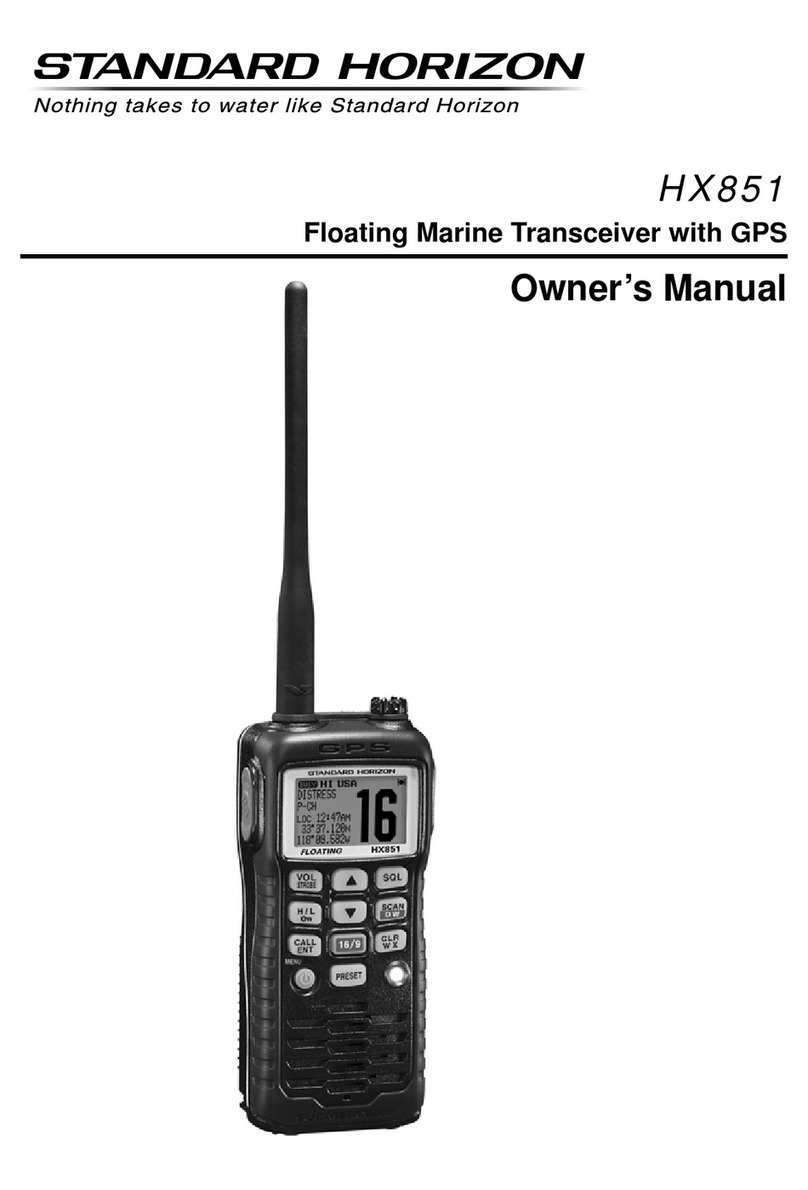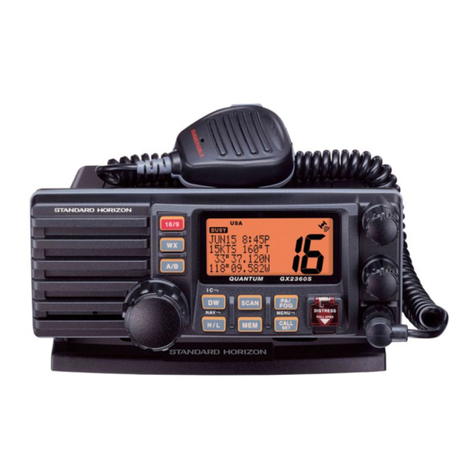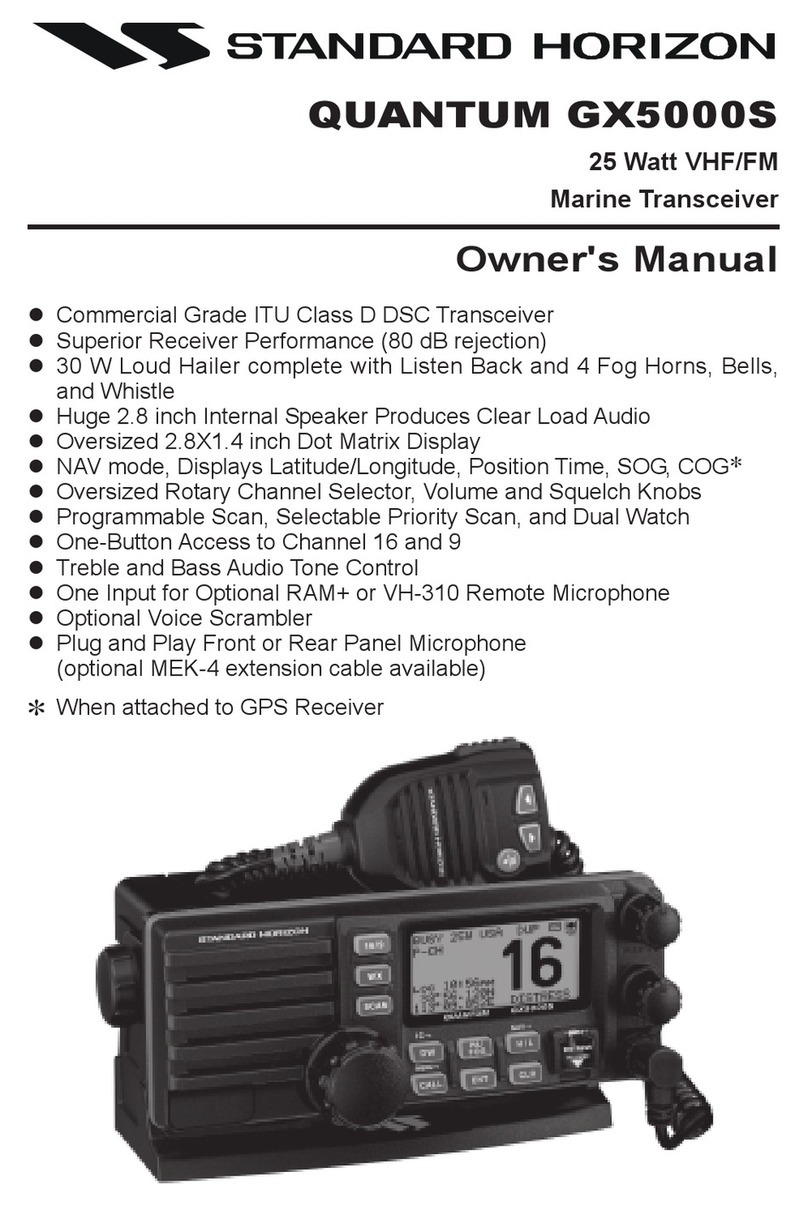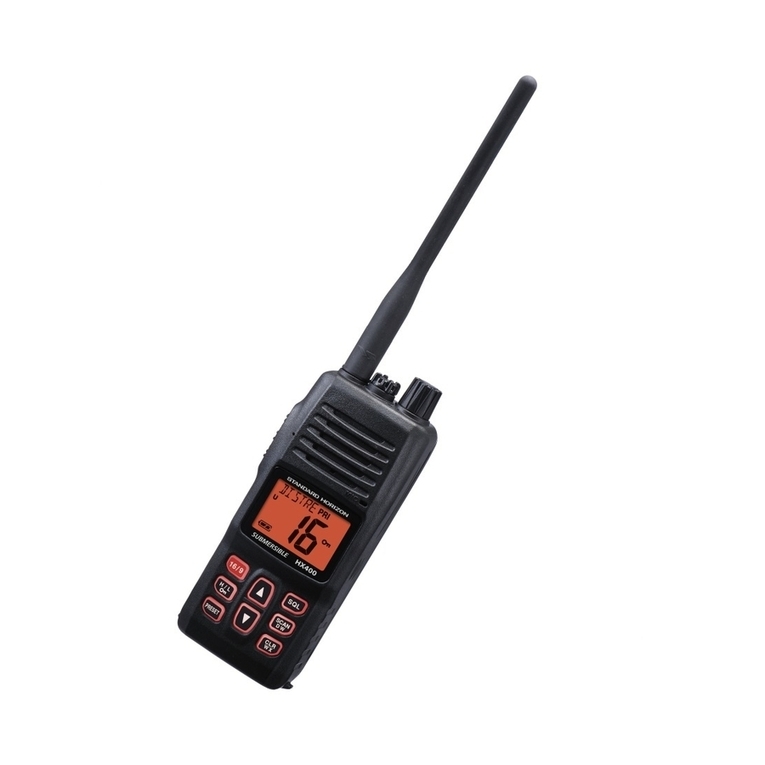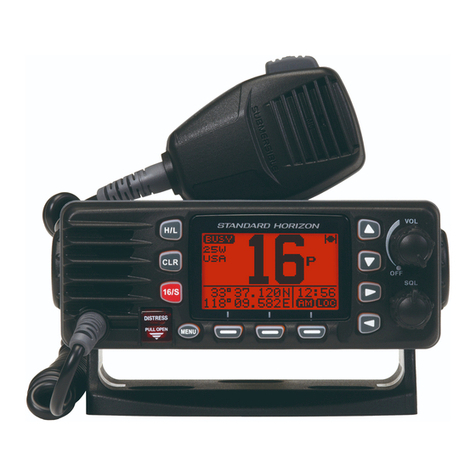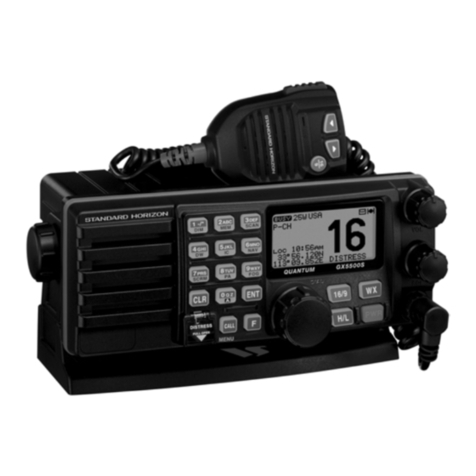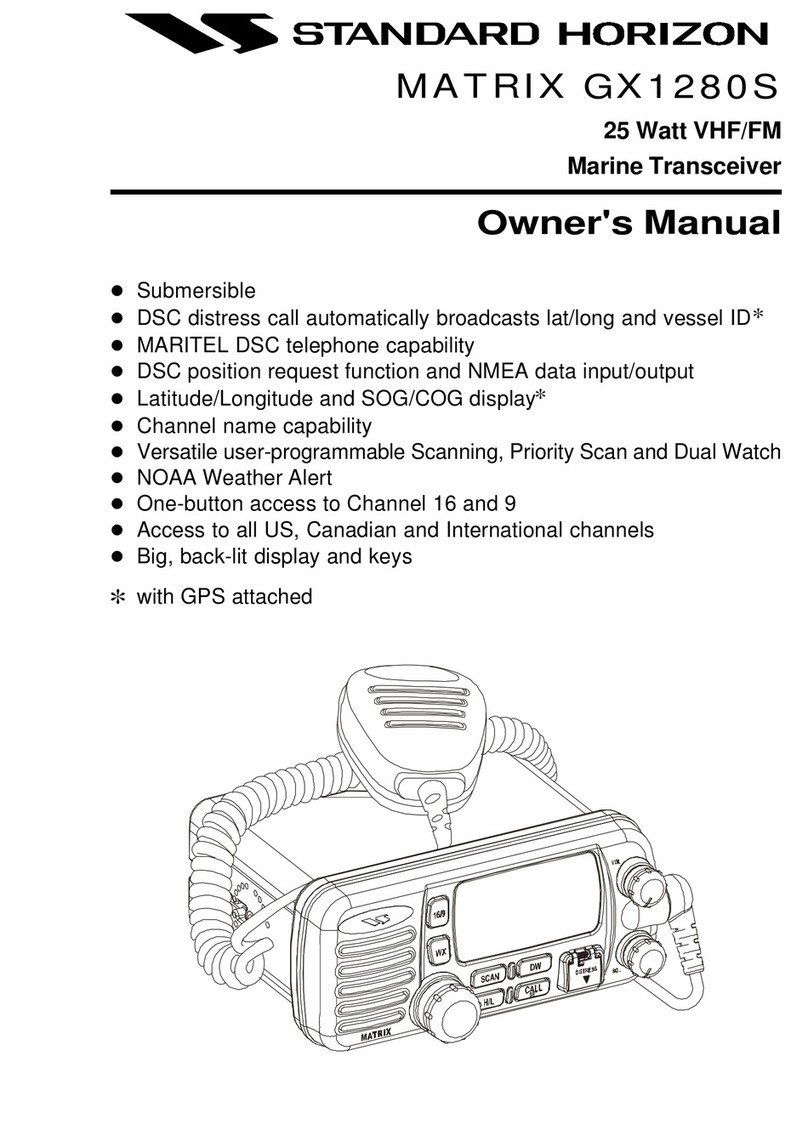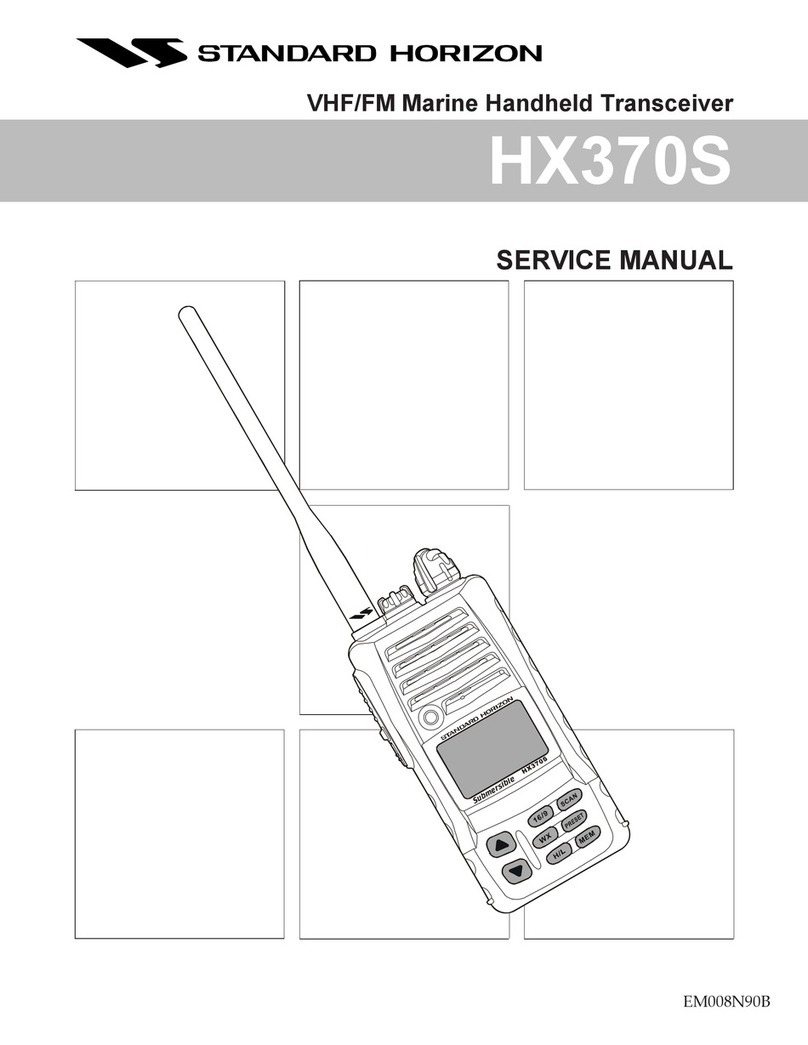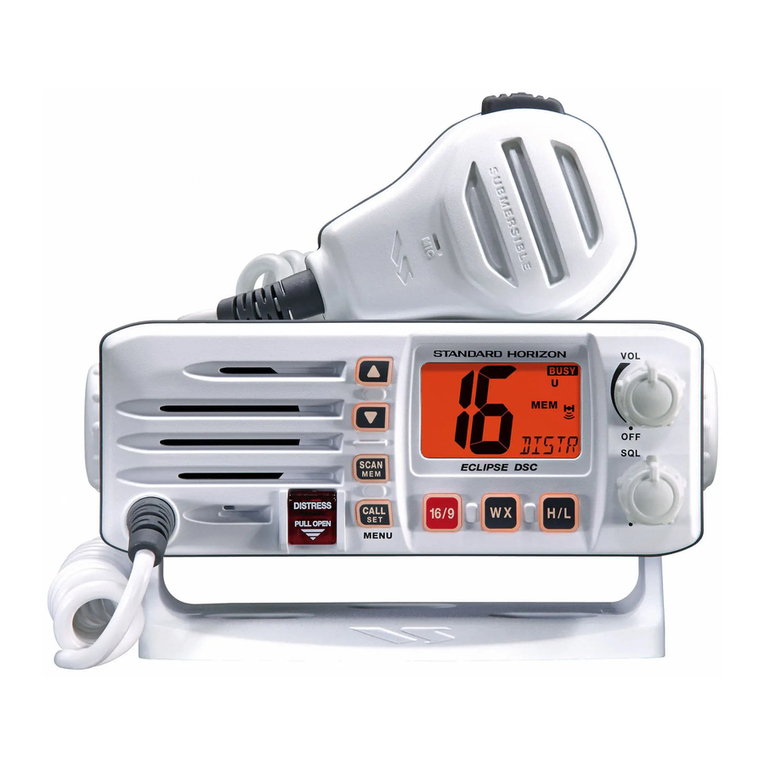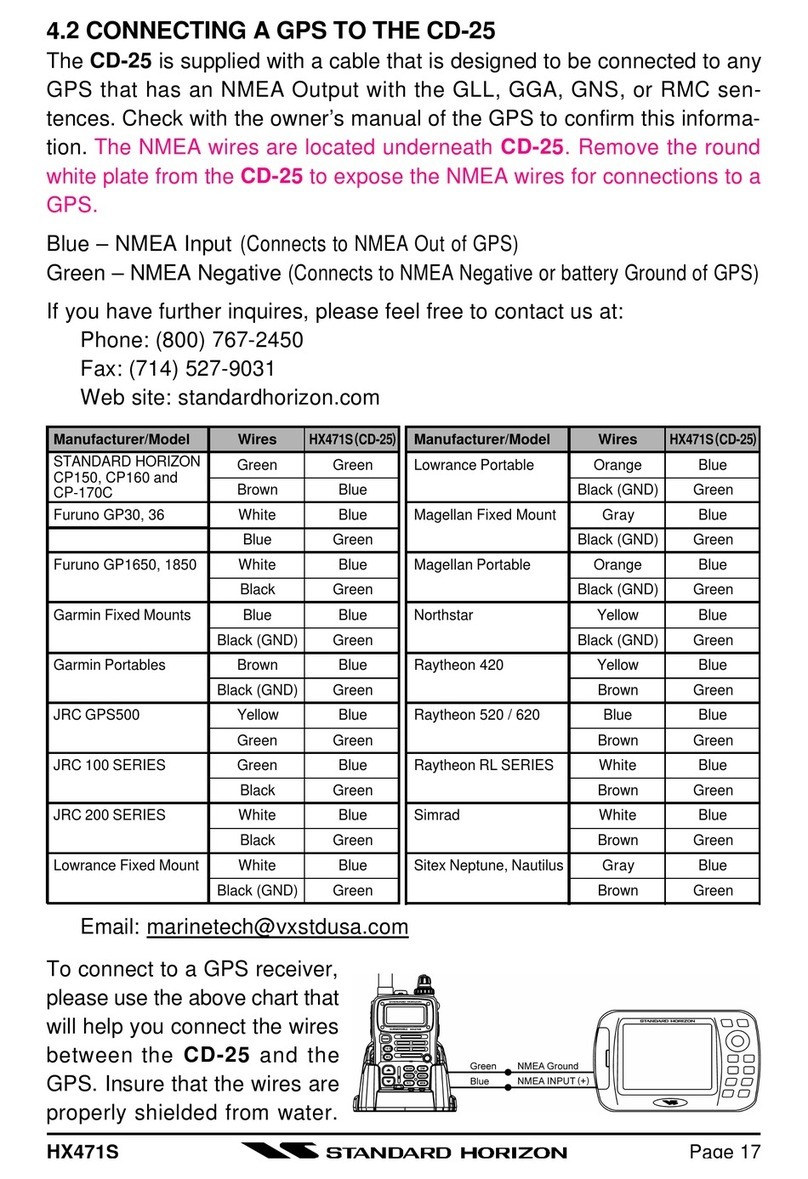
7
Circuit Description
Reception and transmission are switched by 16-bit MPU
IC Q2003 (M30624FGPGP) on the CNTL Unit. The re-
ceiver uses double-conversion superheterodyne circuit-
ry, with a 21.4 MHz 1st IF and 450 kHz 2nd IF. The 1st
local is produced by a PLL synthesizer, yielding the 30.4
MHz 1st IF. The 2nd local uses a 29.950 MHz crystal oscil-
lator, yielding the 450 kHz 2nd IF. The 2nd mixer and other
circuits use a custom IC to convert and amplify the 2nd IF
and detect FM to obtain demodulated signals. During
transmit, the PLL synthesizer oscillates at the desired fre-
quency directly, for amplification to obtain RF power out-
put. During transmit, voice modulation is applied to this
synthesizer. Transceiver functions, such as TX/RX control,
PLL synthesizer settings, and channel programming, are
controlled using the MPU.
Receiver
Incoming RF signals from the antenna connector are de-
livered to the RF Unit, and pass through a low-pass filter
(LPF) consisting of coils L1001 & L1002 and capacitors
C1002, C1004, & C1007, and antenna switching diode
D1004 (XB15A308) for delivery to the receiver front end.
Signals within the frequency range of the transceiver are
then passed through a bandpass filter consisting of coils
L1010 & L1013 and capacitors C1059, C1060, C1062, C1094,
& C1095, before RF amplification by Q1022 (3SK294).
The amplified RF is then passed through a bandpass filter
again consisting of coils L1027, L1028, & L1031 and ca-
pacitors C1165, C1166, C1167, C1168, C1169, C1191, &
C1192, the pure in-band input signal is delivered to 1st
mixer Q1031 (3SK131).
Buffered output from the MAIN VCO is amplified by
Q1032 (2SC5006) and low-pass filtered by coils L1038,
L1040, & L1055 and capacitors C1216, C1217, C1245, and
C1246, to provide a pure 1st local signal between 125.65
and 131.625 MHz for delivery to the 1st mixer Q1031
(3SK131).
The 30.4 MHz 1st mixer product then passes through
monolithic crystal filters XF1003 and XF1004 (±6.5 kHz
BW), and is amplified by Q1037 (2SC4400-3) and deliv-
ered to the input of the FM IF subsystem IC Q1039
(TA31136FN). This IC contains the 2nd mixer, 2nd local
oscillator, limiter amplifier, FM detector, noise amplifier,
and squelch gates.
The 2nd local in the FM IF subsystem IC is produced from
crystal X1001 (29.950 MHz), and the 1st IF is converted to
450 kHz by the 2nd mixer and stripped of unwanted com-
ponents by ceramic filter CF1001.
After passing through a limiter amplifier, the signal is
demodulated by the FM detector. Demodulated receive
audio from the FM IF subsystem IC is amplified by Q1046
and Q1050 (both 2SC4154E), then the signal is through
the AF selecor switch Q1036 (CD4066BPW). The selected
signal is passed through the AF Mute switch Q1047
(RT1N441U) to the AF power amplifier Q1048 (LA4425A),
the audio signal is delivered to the 16 Ohm internal loud-
speaker and external Speaker terminal in the accessory
cable.
PLL Synthesizer
The 1st Local signal maintains stability from the PLL syn-
thesizer by using a 29.950 MHz reference signal from crys-
tal X1001. PLL synthesizer IC Q1035 (TB31202FNG) con-
sists of a prescaler, reference counter, swallow counter,
programmable counter, a serial data input port to set these
counters based on the external data, a phase comparator,
and a charge pump.
The PLL synthesizer IC divides the 29.950 MHz reference
signal by 2396 using the reference counter (12.5 kHz com-
parison frequency). The reference oscillator feeds to the
PLL synthesizer IC Q1035 (TB31202FNG). for the 2nd lo-
cal signal.
The VCO output is divided by the prescaler, swallow
counter and programmable counter. These two signals are
compared by the phase comparator, and applied to the
charge pump.
A voltage proportional to their phase difference is deliv-
ered to the low-pass filter circuit, then fed back to the VCO
as a voltage with phase error, controlling and stabilizing
the oscillating frequency. This synthesizer also operates
as a modulator during transmit.
The MAIN VCO is consisted of Q1035 (2SK520-K41) and
varactor diodes D1015, D1016, D1017, and D1018 (all
HVC306B), which oscillates at 30.4 MHz below from the
receiving frequency. The MAIN VCO output passes
through buffer amplifier Q1032 (2SC5006) to obtain sta-
ble output, then applied to the 1st mixer Q1031 (3SK131).
The DC supply for the MAIN VCO is regulated by Q1030
(2SC4154E).
The TX & SUB VCO is consisted of Q1025 (2SK520-K4)
and varactor diode D1010, D1011, D1012, and D1013 (all
1SV286B), which oscillates at 134.225 MHz for the CH70
receiving and the fundamental transmit frequency dur-
ing a transmit, with direct frequency-modulation using
varactor diode D1009 (1SV325). The TX & SUB VCO out-
put passes through buffer amplifier Q1024 (2SC5006) to
obtain stable output. The TX & SUB VCO output is passed
through another buffer amplifier Q1020 (2SC5006) and
diode switch D1007 (DAN235U) to the sub 1st mixer Q1023
(3SK131) during receive, and to drive amplifiers Q1014
(2SC5006) for transmit. The DC supply for the TX & SUB
VCO is regulated by Q1021 (2SC4154E).
